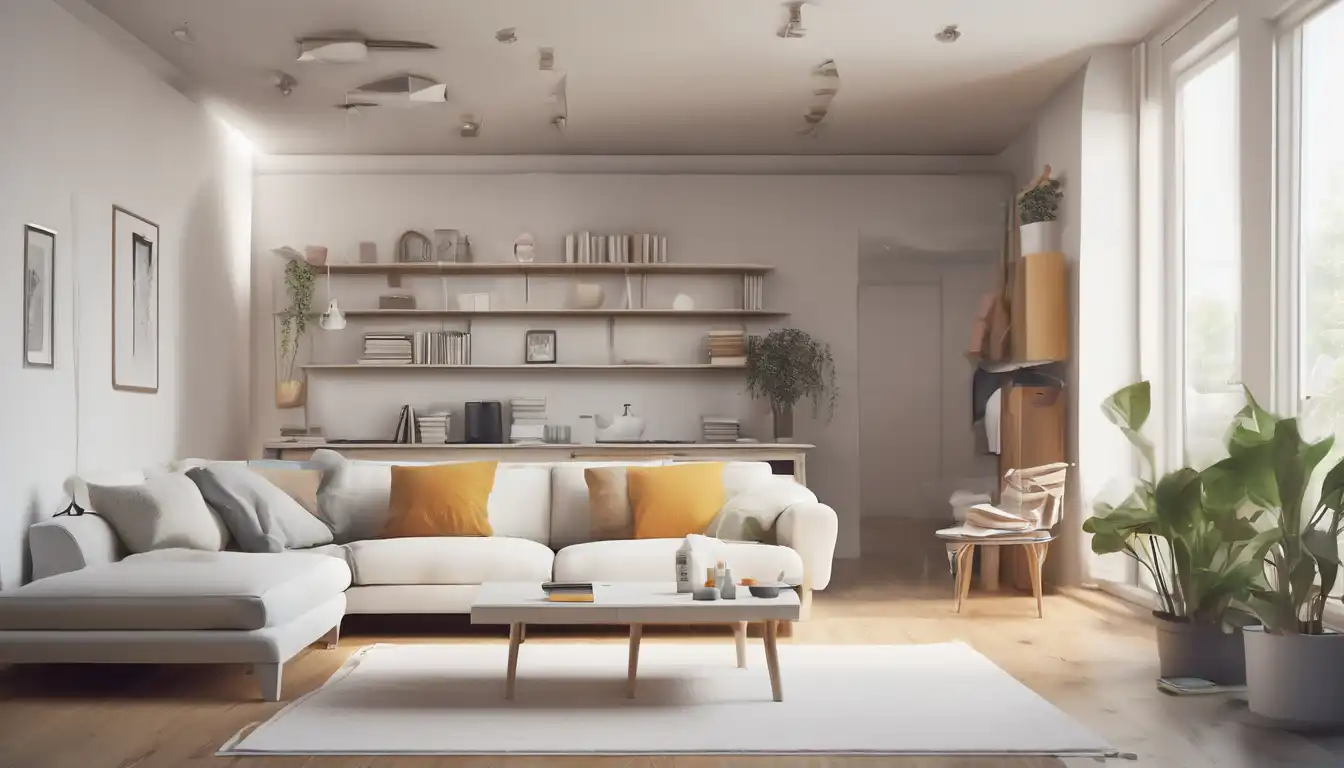Embracing Minimalism: Your Path to a Clutter-Free Existence
In today's fast-paced world filled with constant consumerism and digital overload, minimalist living has emerged as a powerful antidote to the stress and chaos of modern life. This comprehensive guide will walk you through practical minimalist living tips that can transform your space, mindset, and overall quality of life. Whether you're just beginning your minimalist journey or looking to deepen your practice, these strategies will help you create a home environment that promotes peace, clarity, and intentionality.
Understanding the Core Principles of Minimalism
Before diving into specific techniques, it's crucial to grasp what minimalism truly represents. Contrary to popular belief, minimalism isn't about deprivation or living with nothing. Instead, it's about surrounding yourself only with items that add value to your life while eliminating everything that doesn't serve a purpose or bring joy. This intentional approach to ownership can significantly reduce stress, save time, and increase your appreciation for what truly matters.
The beauty of minimalism lies in its flexibility—there's no one-size-fits-all approach. Some people embrace extreme minimalism with fewer than 100 possessions, while others practice a more moderate form that focuses on mindful consumption. The key is finding what works for your unique lifestyle and values.
Practical Decluttering Strategies to Start Today
The KonMari Method: Sparking Joy
Marie Kondo's revolutionary approach to decluttering has helped millions worldwide. The method involves gathering all items from a specific category (clothing, books, papers, etc.) and physically touching each one to determine if it "sparks joy." If an item doesn't elicit positive feelings or serve a practical purpose, it's time to thank it for its service and let it go. This emotional connection to our possessions makes the process more meaningful and sustainable.
The 90/90 Rule for Decision Making
For items you're unsure about keeping, apply the 90/90 rule: Have you used this item in the last 90 days? Will you likely use it in the next 90 days? If the answer to both questions is no, it's probably safe to donate or discard. This simple guideline eliminates the "just in case" mentality that often leads to clutter accumulation.
One-In, One-Out Policy
To maintain your clutter-free space, implement a one-in, one-out rule. Whenever you bring a new item into your home, commit to removing something similar. This practice encourages mindful purchasing and prevents the gradual re-accumulation of possessions that often follows major decluttering efforts.
Room-by-Room Minimalist Transformation
Creating a Serene Bedroom Sanctuary
Your bedroom should be a peaceful retreat dedicated to rest and relaxation. Start by removing all non-essential items, especially electronics and work-related materials. Keep only what you need for sleeping and dressing. Consider adopting a capsule wardrobe approach to simplify your clothing choices and reduce decision fatigue each morning.
Streamlining Your Kitchen Space
Kitchens often become cluttered with single-use gadgets and duplicate items. Keep only the tools you regularly use and love. Donate excess utensils, mismatched containers, and appliances that gather dust. Organize your pantry with clear containers and label everything for easy access. A minimalist kitchen not only looks better but also makes cooking and cleaning more efficient.
Optimizing Your Living Areas
Living rooms should promote connection and relaxation rather than displaying every decorative item you own. Choose a few meaningful pieces of art or decor that truly enhance the space. Implement smart storage solutions to keep surfaces clear, and consider multi-functional furniture that serves multiple purposes without overcrowding the room.
Digital Minimalism: Decluttering Your Virtual Space
Minimalism extends beyond physical possessions to our digital lives. Start by organizing your computer files into clearly labeled folders and deleting unnecessary documents. Unsubscribe from email lists that no longer interest you, and limit your social media usage to platforms that genuinely add value to your life. Digital minimalism can significantly reduce mental clutter and improve focus.
Developing Sustainable Minimalist Habits
Transitioning to a minimalist lifestyle requires developing new habits that support your goals. Practice mindful shopping by asking yourself three questions before any purchase: Do I need this? Will I use this regularly? Where will I store this? Implement a regular maintenance schedule where you spend 15 minutes each day tidying and assessing your possessions.
Another powerful habit is the weekly review. Set aside time each week to evaluate what's working in your space and what needs adjustment. This proactive approach prevents small clutter from accumulating into overwhelming messes.
Overcoming Common Minimalism Challenges
Many people struggle with sentimental items when adopting minimalist principles. Instead of keeping every memento, consider taking photographs of meaningful objects before letting them go. Create a single "memory box" for your most precious items rather than scattering sentimental clutter throughout your home.
Another challenge involves managing expectations from family members who may not share your minimalist values. Communicate your goals clearly and focus on leading by example rather than imposing your preferences on others. Remember that minimalism is a personal journey that looks different for everyone.
The Long-Term Benefits of Minimalist Living
Embracing minimalism offers numerous rewards beyond just a tidy home. You'll likely experience reduced stress levels, improved mental clarity, and more free time since you'll spend less time cleaning, organizing, and searching for misplaced items. Financially, you'll save money by purchasing only what you truly need and avoiding impulse buys.
Perhaps most importantly, minimalism creates space for what truly matters—meaningful relationships, personal growth, and experiences that bring genuine happiness. By eliminating the excess, you make room for a more intentional and fulfilling life.
Remember that minimalism is a journey rather than a destination. Start small, be patient with yourself, and celebrate each step toward a simpler, more clutter-free existence. For more inspiration on creating peaceful living spaces, explore our guide on home organization techniques or discover how mindful consumerism can transform your shopping habits.
